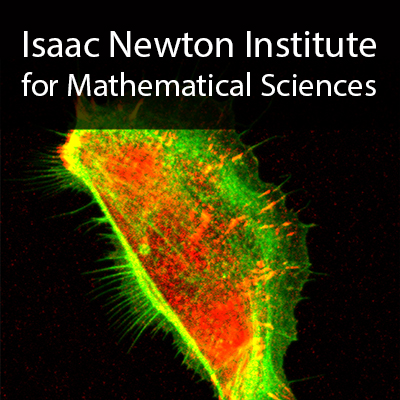Cell-based modelling for wound contraction and angiogenesis
1 hour 22 mins,
150.03 MB,
MP3
44100 Hz,
249.81 kbits/sec
Share this media item:
Embed this media item:
Embed this media item:
About this item

| Description: |
Vermolen, F (Delft University of Technology)
Tuesday 3rd November 2015 - 11:00 to 12:00 |
|---|
| Created: | 2015-11-11 11:10 |
|---|---|
| Collection: | Coupling Geometric PDEs with Physics for Cell Morphology, Motility and Pattern Formation |
| Publisher: | Isaac Newton Institute |
| Copyright: | Vermolen, F |
| Language: | eng (English) |
| Distribution: |
World
|
| Explicit content: | No |
| Aspect Ratio: | 16:9 |
| Screencast: | No |
| Bumper: | UCS Default |
| Trailer: | UCS Default |
| Abstract: | Wound contraction and angiogenesis are biological processes that often take place during healing of wounds and in tumor development. To model these processes, one distinguishes between different types of models, which are descriptive at several scales, ranging from cellular scale (micro-scale) to the tissue scale (macro-scale). The models are on the macro-scale are based on continuum hypotheses, which means that one sets up and solves partial differential equations with the associated boundary and initial conditions. On the smallest scale one models all kinds of cell phenomena on a molecular level. In this talk, we will consider colonies of cells, which are treated as discrete entities, as well as chemical and mechanical signals that are modelled as sets of partial differential equations. Hence, the current approach is a hybride one.
The process of angiogenesis, which is the formation of a vascular network in tissues, is often modeled by using principles based on cell densities in a continuum approach or on hybride cellular-continuum level where one uses cellular automata (in particular cellular Potts) models. In this study, we abandon the lattice needed to model the cell positions in cellular automata modelling and instead, we apply a continuous cell-based approach to simulate three-dimensional angiogenesis. Next to the application of this modelling strategy to angiogenesis, we discuss the application of the formalism to wound contraction. The talk will describe some of the mathematical issues encountered in these models and further some animations will be shown to illustrate the potential merits of our approaches. |
|---|---|
Available Formats
| Format | Quality | Bitrate | Size | |||
|---|---|---|---|---|---|---|
| MPEG-4 Video | 640x360 | 1.93 Mbits/sec | 1.15 GB | View | Download | |
| WebM | 640x360 | 820.66 kbits/sec | 486.87 MB | View | Download | |
| iPod Video | 480x270 | 494.77 kbits/sec | 293.53 MB | View | Download | |
| MP3 * | 44100 Hz | 249.81 kbits/sec | 150.03 MB | Listen | Download | |
| Auto | (Allows browser to choose a format it supports) | |||||

